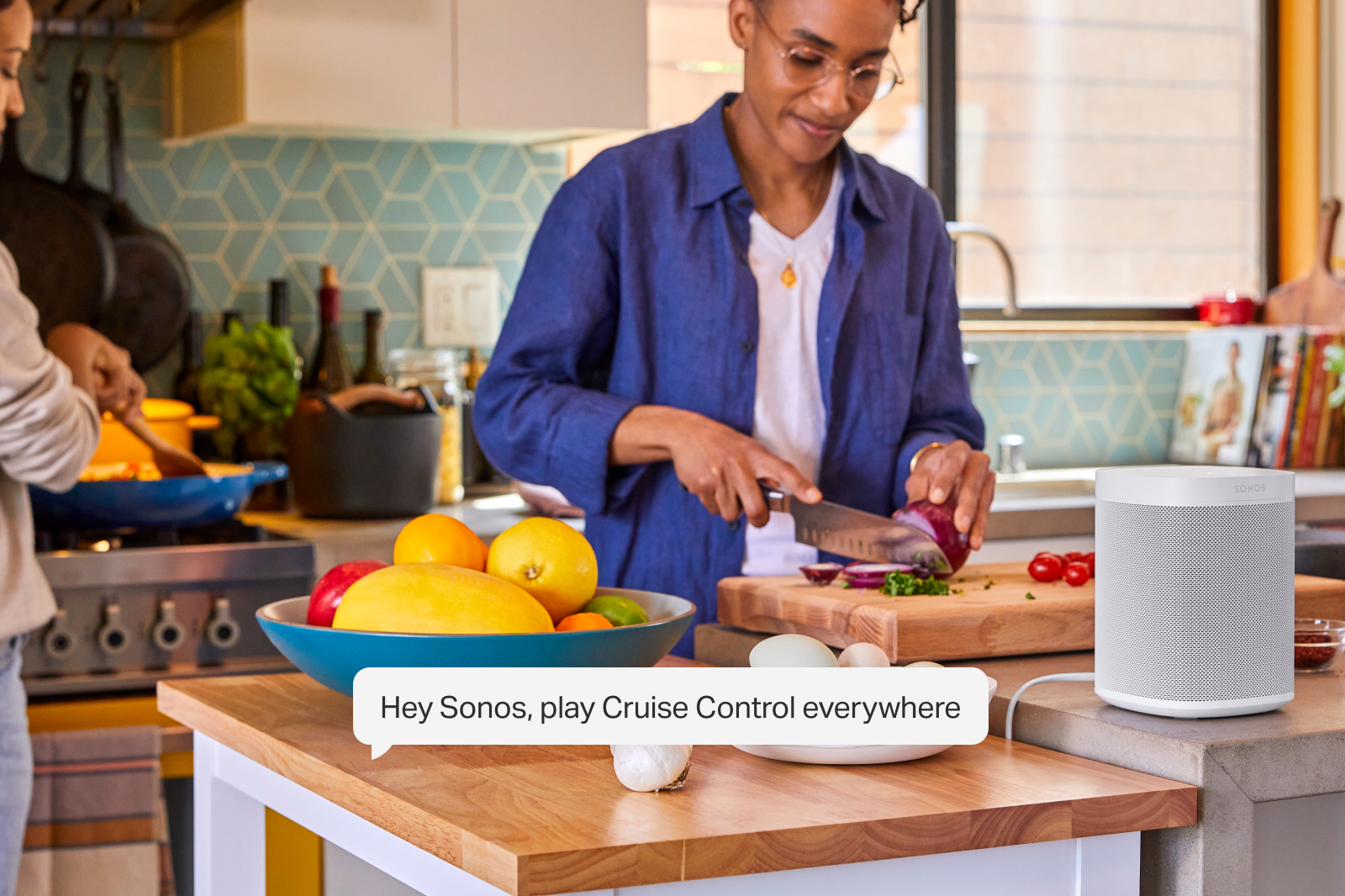Sonos devices have supported Amazon’s Alexa voice assistant for almost five years now. The Sonos One from 2017 was the first speaker the company made with built-in microphones, and almost every speaker it’s made since it has worked with Alexa, not to mention Google Assistant. Despite supporting those popular services, though, Sonos has decided to build its own voice assistant. Dubbed Sonos Voice Control, the feature is specifically designed to work with music only, so this isn’t exactly a competitor to Alexa and Google Assistant. Instead, it’s meant to control your music as quickly as possible, and with privacy in mind.
Oh yeah, and it’s voiced by none other than Giancarlo Esposito.

sound
Sonos Voice Control will be available on every Sonos speaker that has a microphone, going all the way back to the first-generation Sonos One. Like other voice assistants, you use a wake phrase (Hey Sonos) to get the speaker’s attention. From there, you can ask it to play songs, albums or artists from Apple Music, Amazon Music, Deezer or Pandora. You can also ask it to play stations from Sonos Radio. Nope, Spotify and YouTube Music aren’t available right now, though Sonos says it plans to add more services in the future.
As I alluded to earlier, Sonos Voice Control isn’t a full-fledged Alexa competitor. You can’t ask it for the weather or to add items to your to-do list; instead, it’s specifically tailored for music and controlling your Sonos system. That means you can ask Sonos to move music you’re playing from one speaker to another, or to play on all the connected speakers in your house. Simple commands like volume and skipping tracks work, as well.
Those limited commands, plus play and pause controls, will even work on Bluetooth speakers like the Roam and Move when they’re not connected to WiFi. Sonos also promises that setup will be a simple matter of turning on the feature in the Sonos app – since you’re not connecting to a third-party system, you don’t have to bounce between multiple apps to get things working here.
You may be wondering why you’d use Sonos Voice Control over one of the other voice assistants that work with its speakers. The company thinks privacy will be a big selling point here, as it cites research that a lot of people who don’t set up voice commands on Sonos speakers do so because of privacy concerns. But Sonos Voice Control gets around that by doing everything on-device – the company was explicit about this in a press conference, saying that no voice commands are saved or sent off the device back to Sonos.
This has another benefit: Sonos Voice Control is fast. Most of the time, there’s no need for the speaker to verbally respond to your query, so you just ask it to play a song and the song plays. Obviously, we’ll need to do more testing with the software’s final version, but in a demo I saw earlier this week, the performance was extremely impressive. When I ask smart speakers to play music, there’s usually a noticeable pause as the speaker pings the internet and starts streaming music. Most of the time, the assistant also repeats what you asked for before it starts playing. But with Sonos Voice Assistant, there’s no verbal response, and the time it takes to process and understand commands seems to be much faster than when I use Google Assistant or Alexa on my Sonos speakers. In my unscientific testing, Alexa is definitely faster than Google Assistant for most queries, but the Sonos assistant seemed faster still.
If you’re already using Alexa on your Sonos speakers, you can add the Sonos Voice Assistant to work alongside Alexa. You can use the “Hey Sonos” wake phrase to control your music and still ask Alexa to do all the things it can do. Unfortunately, though, that’s not the case with Google Assistant; you can only use Google’s voice commands or Sonos, not both. In the past Sonos has alluded to Google being the reason that you couldn’t use both Alexa and the Google Assistant on its speakers, and that appears to be the case here, too.
As for how Sonos landed on Giancarlo Esposito for their voice assistant, the company says it considered numerous different options, including computer-generated male, female and gender-neutral options. But ultimately, the company wanted to go with a voice that would be familiar to many users – one that had more personality than you’d get from a generic voice. That said, you don’t hear Esposito talk too much, as the system is designed to talk back to you only when you directly ask it for information, like what song is playing. Sonos says it will add more voices over time as Voice Control arrives in more regions, but a company spokesperson declined to say whether they would come from well-known actors like Esposito.
Sonos Voice Control is set to arrive in the US on June 1st, followed by France later this year.
All products recommended by Engadget are selected by our editorial team, independent of our parent company. Some of our stories include affiliate links. If you buy something through one of these links, we may earn an affiliate commission.
